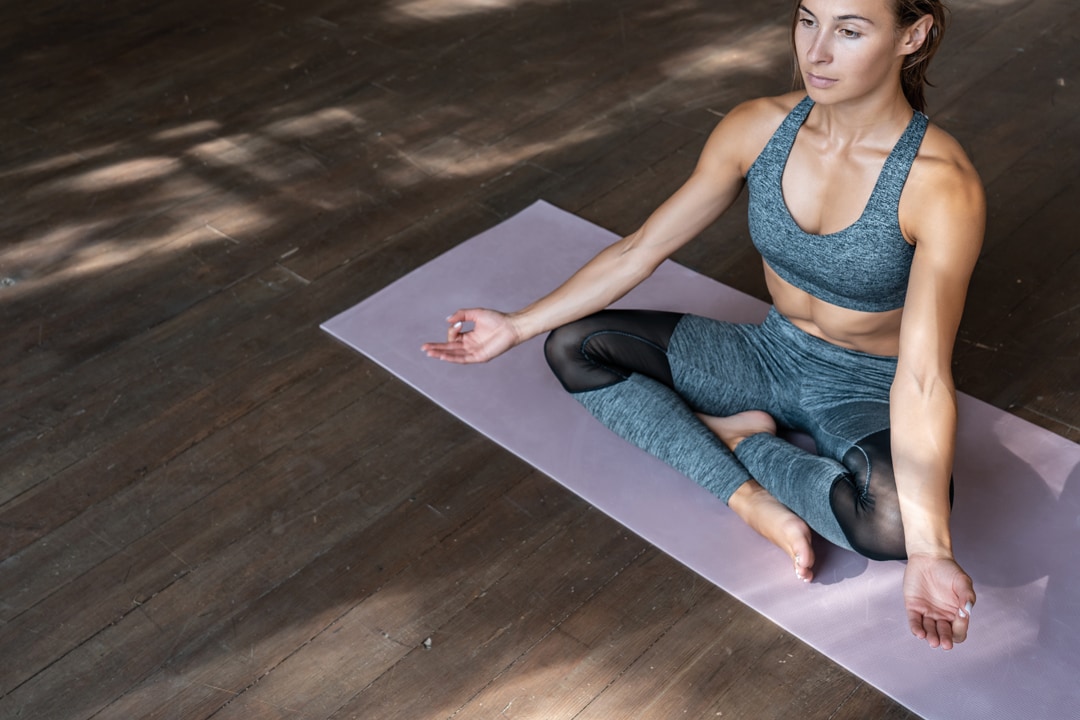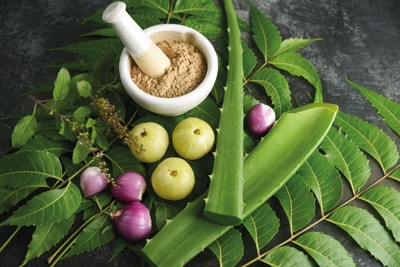
Ayurveda essentials
A quick overview of the key Ayurvedic essentials to get you up to speed on this most ancient of health practices. By Jake Hitchcock
Have you noticed that a lot of the advice circulating nowadays about health and wellbeing seems to be contradictory? Or how food fads and trends tend to offer a one size fits all approach without considering peoples’ genetics, temperament, goals, or what they actually need help with?
Well, in amongst the deafening disorder of click-bait weight loss articles and new and complex wellbeing methods, there is an approach that addresses the absolute fundamentals of personal health: ayurveda.
Ayurveda is believed to be the oldest health system in the world and the origin of the practice of yoga. The word comes from Sanskrit, ayur, meaning ‘life’ and, veda, meaning ‘knowledge’ or ‘science’. In this system, different personalities and body types need to eat different foods to thrive, feel great and prevent disease.
It all boils down to what’s known as your Dosha Type.
Most of us won’t have a clue what that means, but if you were to hear the Western phrases of Endomorph, Ectomorph and Mesomorph, you might be able to imagine the three distinct body types that these terms represent. Endomorphs being big boned and as strong as an ox, mesomorphs with a more athletic sprinter-type build and ectomorphs are characterised by a slimmer basketball player physique. Ayurveda takes these concepts a step further, considering 74 A quick overview of the key Ayurvedic essentials to get you up to speed on this most ancient of health practices. By Jake Hitchcock Ayurveda essentials Special Report: Ayurveda the temperament, behaviour, and common health problems these body types face, as opposed to focusing exclusively on their physical appearance and build. Instead of body types, Ayurveda refers to them as Doshas.

The 3 Doshas
The three Doshas are Vata, Pitta and Kapha. Everyone shares a little part of all three within them but are usually dominant in one or two.
Kapha
Let’s start with the Kapha. Your Kapha dominant person will usually be the caring one of your friendship group. They can effortlessly handle pressure and so often make fantastic managers and organisers, remaining calm in all scenarios.
Typically, they have lustrous and thick hair, great teeth, and a slightly bigger build. When they are imbalanced, they can struggle to get out of bed in the mornings, they may overeat and can be prone to feelings of lethargy and depression.
Pitta
Next, we have the Pitta. A Pitta dominant person is the leader of the group. They are usually the centre of attention, have strong piercing eyes, strong ambitions and usually a more muscular physique. When imbalanced they can quickly become overly competitive, angry and aggressive (especially when hungry), and are more prone to heartburn, gastritis or skin flareups, such as acne.
Vata
Finally, the Vata. Those with high Vata prominence are usually very quick-witted and fun on a night out and spontaneous. They are usually of a thin stature and either particularly tall or small individuals, who have strong facial features, often meaning that they can make great models. When Vatas become imbalanced they can often under eat, become forgetful, suffer from painful joints, anxiety, often leading to acute difficulty when sleeping.
Finding balance
How we achieve balance is completely unique to each of the Doshas, which is why a personalised approach to health and wellbeing is at the foundation of the Ayurvedic methodology.
For example, an individual who is dominant in Vata may be struggling to sleep and relax and should therefore focus on undertaking something calming, such as meditation followed by a warm cup of soothing tea.
This activity however wouldn’t be effective for a Kapha dominant type, who would instead need more of an energy boost (especially in the morning), such as the particularly popular ginger shot.
Whilst little evidence exists within Western science to absolutely prove that Ayurveda helps individuals achieve optimum health, around the world these techniques have been used for centuries to establish a strong foundation for ideal health. Little wonder it is fast becoming more accepted in the West.
For years, the Russians have been using the king of Ayurvedic herbs, Ashwagandha, to improve their athletes’ performances. In the cosmopolitan hubs of the world, boutique cafes now serve exotic versions of coffees such as the turmeric latte, and before sleeping in the evening, it is common for people to drink various sleep-inducing or relaxing teas. All these are Ayurvedic methods to help you feel better via what you eat or drink.
The best way to discover your Dosha is to visit an Ayurvedic practitioner, who will conduct a full assessment for you. However, if you are simply keen to learn more about how Ayurveda could enhance your health and wellbeing, then there are many resources online to choose from.
So next time you are looking for a new diet, or health kick, begin by checking in with how you are feeling and always remember to eat natural and organic foods that have the power to make you feel great.
Jake Hitchcock is the founder of insidefix.co.uk Find him on Instagram @insidefix





